

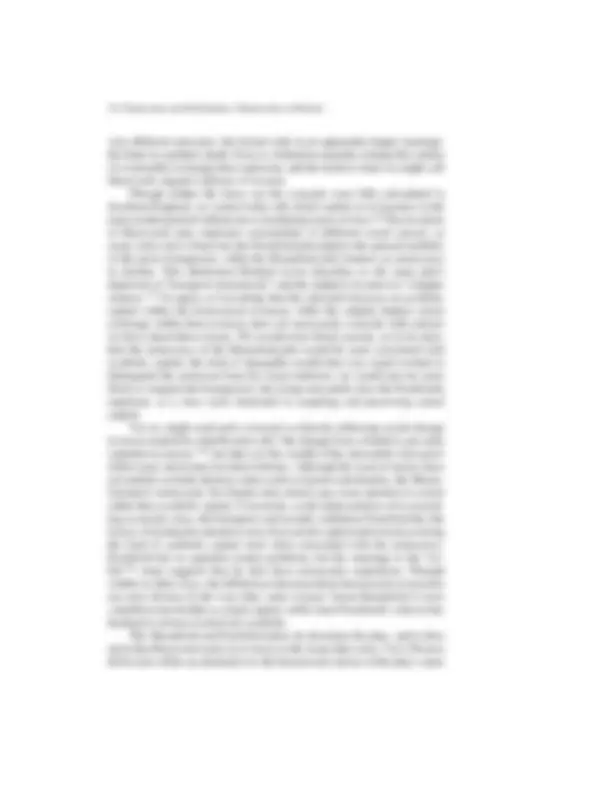
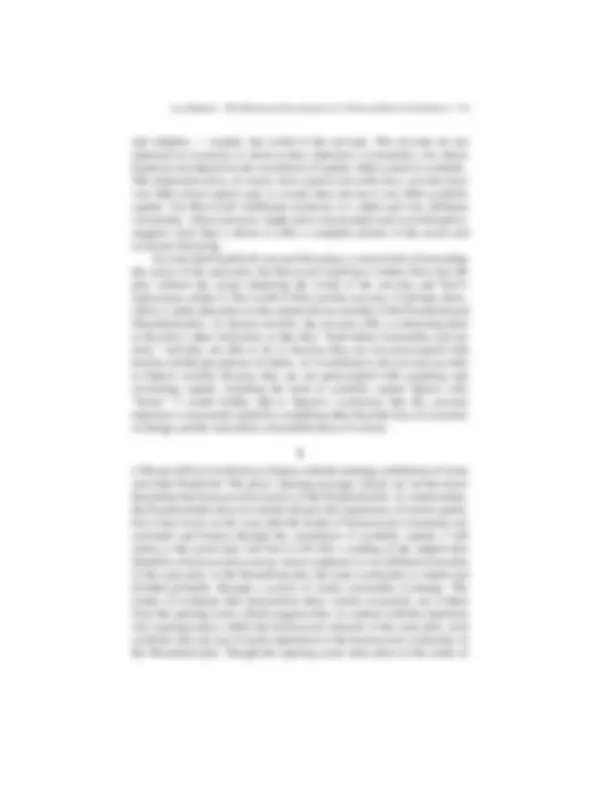

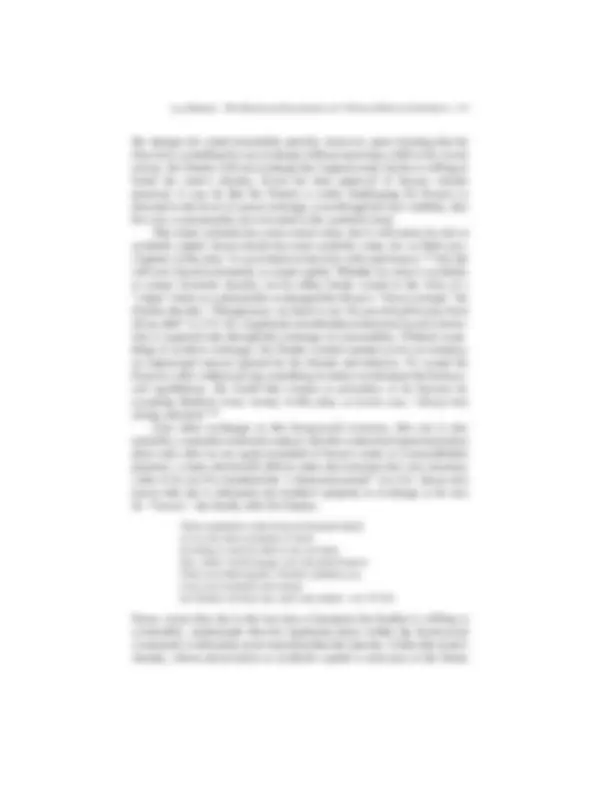
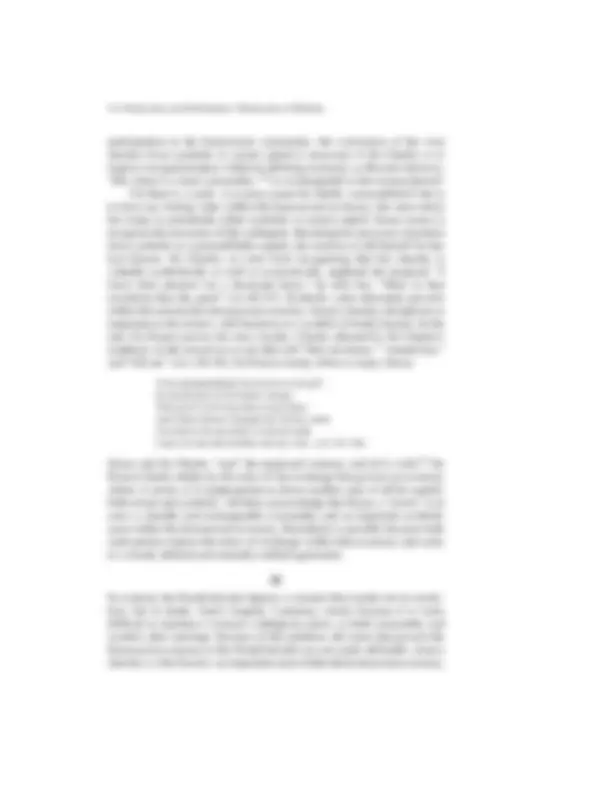


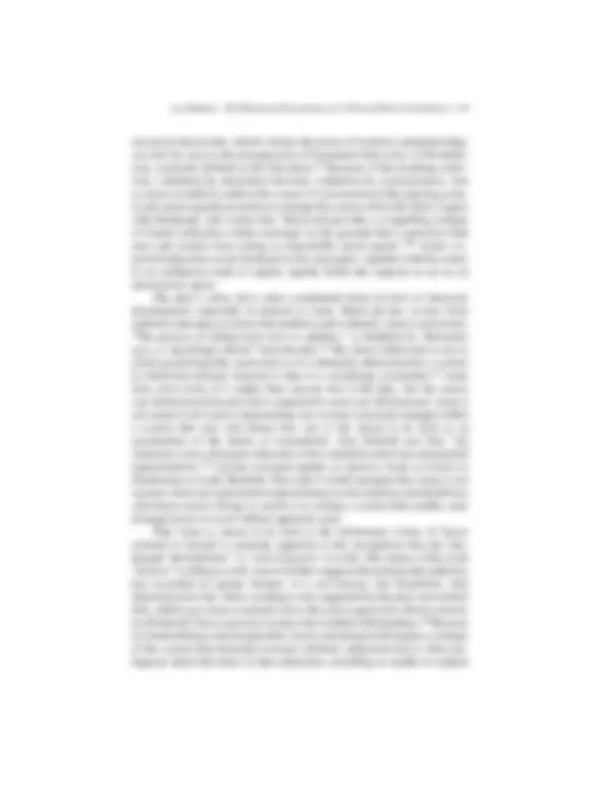
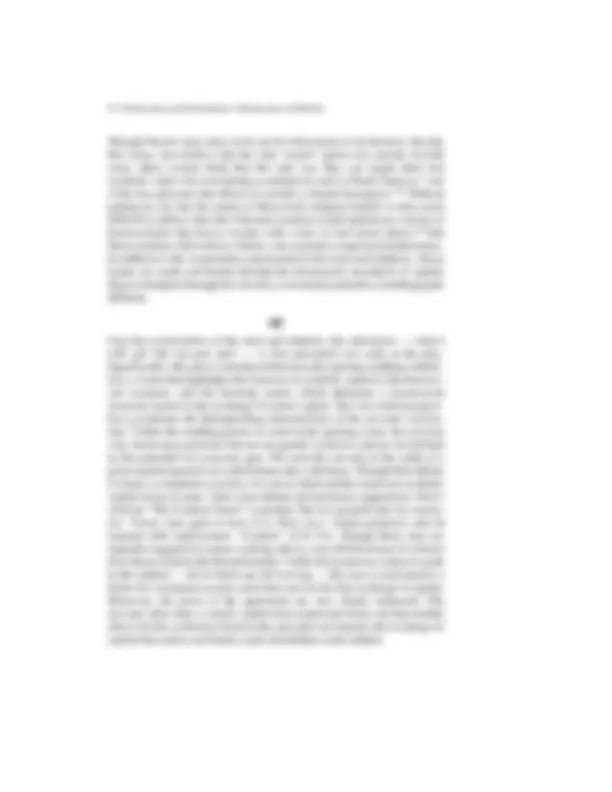
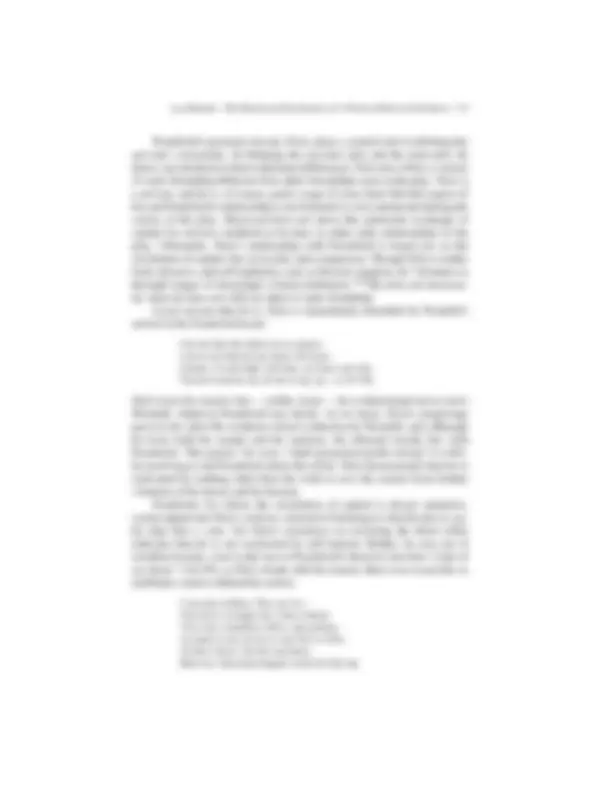

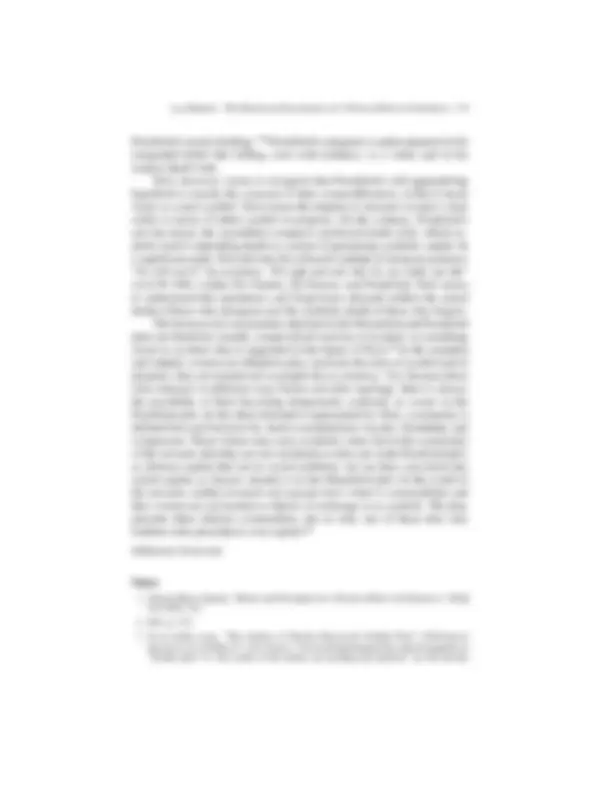








Study with the several resources on Docsity

Earn points by helping other students or get them with a premium plan


Prepare for your exams
Study with the several resources on Docsity

Earn points to download
Earn points by helping other students or get them with a premium plan
Community
Ask the community for help and clear up your study doubts
Discover the best universities in your country according to Docsity users
Free resources
Download our free guides on studying techniques, anxiety management strategies, and thesis advice from Docsity tutors
The differences between two plots in a play - 'Frankford' and 'Mountford' - and how they illustrate the concept of homosocial economies, focusing on the roles of women as actual and symbolic capital. The document also discusses the implications of these roles on social identity and the male community.
What you will learn
Typology: Study notes
1 / 27

This page cannot be seen from the preview
Don't miss anything!




















Résumé : Cet article reconsidère la représentation des relations entre masculin et féminin dans la tragédie domestique de Thomas Heywood. Il propose que cette pièce critique les réseaux « homosociaux » et leur dépendance de la circulation du capital féminin. Par contre, une solution moralement acceptable est égale- ment offerte, grâce aux personnages des serviteurs, surtout Nick. À la différence de l'action axée sur les personnages principaux de Frankford et Mountford, l'action associée aux serviteurs souligne la façon dont les économies homoso- ciales accumulent du capital, d'autant réelle que symbolique, au dépens des femmes.
n a 1959 essay, Patricia Meyer Spacks defended Thomas Heywood's A Woman Killed with Kindness against “derogatory comments” made by previous critics. 1 Demonstrating how the play's two plots and their respec- tive women are intertwined through the themes of honour and perception, Spacks's defence of this “antisentimental” and “powerful” 2 drama marked an important step toward the play's revaluation. A Woman Killed now attracts much more critical attention than it did when Spacks wrote her article, and recent readings have done much to confirm the play's unity and to show how A Woman Killed sympathizes with rather than condemns women. 3 Even so, the jury is still out on whether the play is as unified as we think plays ought to be, and on whether Heywood's treatment of women indicates a proto-femi- nist intent. Though criticism has enhanced our appreciation of A Woman Killed , the play's defenders have not wholly succeeded in laying to rest the questions Spacks's article aimed to answer. But the work of Spacks and other critics has demonstrated that we cannot talk about one issue without also considering the other.
Renaissance and Reformation / Renaissance et Réforme, XXIV, 2 (2000) /
Though A Woman Killed may not be unified in the classical sense, it is unified in other ways. Critics have identified numerous connections between its two plots: some have shown how the bourgeois main plot and the aristocratic subplot are linked in their shared concern with class issues; 4 some have identified various thematic similarities between Anne Frankford and her subplot counterpart, Susan Mountford; 5 still others have noted the importance of male bonds throughout the play — or what one critic has recently called its “homosocial imaginary.” 6 I would like to take this collec- tive recognition further and suggest that the play's dual plot structure and its treatment of women are more closely connected than has so far been acknowledged, and that this interconnection becomes most clear when the two plots are understood in terms of how their heterosexual relationships are shaped by male homosociality. As a social phenomenon, homosociality both shapes and is shaped by its social context: historical changes within the continuum of “male homosocial desire,” Eve Kosofky Sedgwick points out, are always linked with other, “more visible changes.” 7 In Heywood's play, those changes include the ways that patriarchal and class hierarchies re- sponded to, even as they enabled, nascent capitalism. Given this socio-eco- nomic context, I would like to suggest that the communities of men, as they are depicted in both the Frankford and the Mountford plots, are really homosocial economies — economies because their bonds depend not only on shared worldviews but also on the circulation of capital, and homosocial because they not only exclude female participation but also use women as their most valuable form of capital.^8 To varying degrees women function as exchangeable commodities in all patriarchal cultures. As Luce Irigaray has famously observed, “The trade that organizes patriarchal societies takes place exclusively among men. Women, signs, goods, currency, all pass from one man to another.” 9 A Woman Killed depicts a society where trade is, as in Irigaray's formulation, the transactional bond that defines its patriarchal nature and its necessarily homosocial economy. Women in such an economy, Irigaray goes on to suggest, exist “only as the possibility of mediation, transaction, transition, transference — between man and his fellow-creatures, indeed between man and himself.” 10 The commodification of women does not, however, always involve the exchange of women for money or other property — a woman's value may also be symbolic. Sedgwick makes this point when she claims that patriarchal heterosexuality involves “the use of women as exchange- able, perhaps symbolic, property for the primary purpose of cementing the bonds of men with men.” 11 Karen Newman has shown that Jacobean woman, who was believed to be the metonymic “crown of her husband” and thus “a mark of the wearer's honor or achievement,” 12 functioned very much as the
36 / Renaissance and Reformation / Renaissance et Réforme
very different outcomes: the former ends in an apparently happy marriage, the latter in a pathetic death. Even so, both plots arguably critique the culture of commodity exchange they represent, and the result is what we might call Heywood's negative defence of women. Though neither the terms nor the concepts were fully articulated in Jacobean England, we cannot today talk about capital or economies in the early modern period without also considering issues of class. 16 The two plots of Heywood's play represent communities of different social classes: as many critics have observed, the Frankford plot depicts the upward mobility of the proto-bourgeoisie, while the Mountford plot features an aristocracy in decline. This distinction Richard Levin describes as the main plot's depiction of “bourgeois domesticity” and the subplot's location in “a higher stratum.” 17 To argue, as I am doing, that the main plot focusses on symbolic capital within the homosocial economy while the subplot depicts actual exchange within that economy does not necessarily coincide with notions we have about these classes. We would more likely assume, as Levin does, that the aristocracy of the Mountford plot would be more concerned with symbolic capital, the kind of intangible wealth that very much worked to distinguish the aristocrat from his social inferiors; we would also be more likely to imagine the bourgeoisie, the rising mercantile class the Frankfords represent, as a class more interested in acquiring and preserving actual capital. Yet we might read such a reversal as directly reflecting social change in an era marked by what Rossini calls “the change from a feudal to any early capitalist economy,” 18 one that saw the wealth of the mercantile class grow while many aristocrats lost their fortunes. Although his want of money does not entirely occlude abstract values such as honour and chastity, the Mount- ford plot's aristocratic Sir Charles does need to pay more attention to actual rather than symbolic capital. Conversely, as the representative of an ascend- ing economic class, the bourgeois and socially ambitious Frankford has the luxury of turning his attention away from actual capital and toward accruing the kind of symbolic capital most often associated with the aristocracy. Frankford has no apparent money problems, but his marriage to the “no- ble” 19 Anne suggests that he does have aristocratic aspirations. Though visible in other ways, the differences between these homosocial economies are most obvious in the ways they value women: Susan Mountford is most valuable to her brother as actual capital, while Anne Frankford's value to her husband is almost exclusively symbolic. The Mountford and Frankford plots do dominate the play, and it does seem that Heywood wants us to focus on the issues they raise. Yet A Woman Killed also offers an alternative to the homosocial classes of the play's main
38 / Renaissance and Reformation / Renaissance et Réforme
and subplots — namely, the world of the servants. The servants do not represent an economy so much as they represent a community, one whose bonds do not depend on the circulation of capital, either actual or symbolic. This distinction does, of course, have much to do with class; servants have very little actual capital, and, as a result, they also have very little symbolic capital. Yet Heywood's deliberate inclusion of a third and very different community, whose presence might seem unwarranted and even disruptive, suggests more than a desire to offer a complete picture of the social and economic hierarchy. It is true that Frankford's servant Nick plays a crucial role in forwarding the action of the main plot, but Heywood could have written Nick into the play without the scenes depicting the world of the servants and Nick's interactions within it. The world of Nick and the servants, I will later show, offers a viable alternative to the capital-driven morality of the Frankford and Mountford plots. As Spacks remarks, the servants offer a contrasting ideal to the play's other characters in that they “both behave honorably and see truly,” and they are able to do so because they are not preoccupied with honour and the perceptions of others. As I would put it, the servants are able to behave morally because they are not preoccupied with acquiring and circulating capital, including the kind of symbolic capital Spacks calls “honor.” I would further add to Spacks's conclusion that the servants represent a community united by something other than the rites of economic exchange and the masculine commodification of women.
A Woman Killed with Kindness begins with the marriage celebration of Anne and John Frankford. The play's opening passages clearly set out the terms that define the homosocial economy of the Frankford plot. As noted earlier, the Frankford plot does not wholly dismiss the importance of actual capital, but it does focus on the ways that the bonds of homosocial community are sustained and broken through the circulation of symbolic capital. I will return to this point later, but first I will offer a reading of the subplot that identifies a homosocial economy whose emphasis is very different from that of the main plot: in the Mountford plot, the male community is united and divided primarily through a system of actual commodity exchange. The modes of exchange that characterize these variant economies are evident from the opening scene, which suggests that, in contrast with the important role marriage plays within the homosocial network of the main plot, such symbolic rites are not of much importance to the homosocial community of the Mountford plot. Though the opening scene takes place in the midst of
Lyn Bennett / The Homosocial Economies of A Woman Killed with Kindness / 39
(iii.99–101). Sir Charles's violation is an act of desecration, and he becomes a homosocial outcast whose only friend is a woman. Sir Charles's exclusion from the homosocial economy seems assured as he goes on to spend the family fortune on his legal defense: “My life,” he laments, “hath cost me all the patrimony / My father left his son” (v.18–19). Without the kind of capital needed to participate in actual exchange, Sir Charles's place in the homosocial economy is even more tenuous than it was immediately after the murders, and the opportunistic “false friend” Shafton sees a chance to gain from Sir Charles's misfortune. Made in accordance with the rites of homosocial contract-making, Shafton's loan is offered in what seem to be unambiguous terms, terms that are freely accepted by Sir Charles. As with the earlier contract, this one is also witnessed by other “gentlemen,” who, we are told, come “and see it tendered down” (vi.57). 20 The duplicitous Shafton soon uses the contract against Sir Charles, demanding quick repayment in the form of the Mountford estate. Sir Charles, however, tells him in no uncertain terms that
I now the last will end and keep this house, This virgin title never yet deflowered By any unthrift of the Mountford's line. In brief, I will not sell it for more gold Than you could hide or pave the ground withal. (vii.22–26)
Within the male system of exchange, it appears, some forms of property can be deemed non-commodifiable, valuable only as symbolic capital. Social identity in this play is inseparable from property, and this “virgin” property is inextricably bound up with an aristocratic identity that comes through patrilineal descent; to use it as actual capital would be to lose its value as symbolic capital. A loss on this scale would likely shut him forever out of the male community that defines his ancestral past and thus his present social status. 21 This type of symbolic capital, it appears, is as valuable an asset in this economy as actual capital. Sir Charles makes it perfectly clear that the Mountford estate is his, it is chaste, and it will remain so: he is determined not to part with the last of his inheritance, a piece of symbolic wealth that allows him to retain his aristocratic status and to hold, if only by refusal, a negotiating position within the homosocial economy. 22 The metaphors used to describe this feminized piece of property confirm that women and real estate are both important objects of trade within that economy, even when they are not available for exchange. However, it soon becomes apparent that a woman's symbolic value is readily converted to capital of the actual kind. When Sir Charles is rearrested for his debt to Shafton and powerless to help himself because he refuses to part with the estate, Susan is sent to
Lyn Bennett / The Homosocial Economies of A Woman Killed with Kindness / 41
petition his “kinsmen and allies” (vii.68). But Susan's attempts to negotiate within this homosocial world result in utter failure, a failure suggesting that such a role is inappropriate for a woman who is really an object of trade within its economy. Susan's failure also reaffirms Sir Charles's necessary exclusion from a community whose bonds are defined through the exchange of capital. Sir Charles cannot belong because he has nothing left to exchange — at least nothing that interests his uncle Old Mountford, his friends Sandy and Roder, or his cousin Tydy. Roder denies their friendship, telling Susan, “now I neither know you nor your suit” (ix.25), while Tydy insists that “I am no cousin unto them that borrow” (ix.36). In this society, male relation- ships apparently do not exist without the possibility of economic exchange; as Susan later tells her brother, “our kindred with our plenty died” (x.70). The ability to participate in the homosocial economy evidently takes prece- dence over the bonds of family or friendship in defining a community. Sir Charles still possesses something of exchange value — his sister Susan. Susan, however, vehemently rejects Sir Francis's offer of gold in exchange for sex and thus refuses to act as commodity. By so doing, she also impedes the possibility of her brother's reinstatement as a viable participant within the homosocial economy. Susan, it appears, would like to remain in her role as symbolic rather than actual capital; she is no more willing to sacrifice her virginity than her brother is willing to give up the family estate. Sir Francis, however, ignores Susan's refusal and insists on pursuing her, yet the more she scorns him, the more he is “wrapped in admiration” (ix.60). But Susan's pursuer also recognizes that sexual possession can be achieved only with her brother's approval and with the contractual exchange of one form of capital for another. Sir Charles knows as well as Sir Francis that the latter wields enough economic power to absolve the former's debt and, additionally, to reverse the appeal for the huntsmen's deaths — whose lives, apparently, are now also commodifiable within the system of exchange. Sir Francis's desire for Susan will prove the means of restoring Sir Charles to a place within the homosocial community. To win her, he resolves, “I'll bury all my hate of him” (ix.73). Sir Charles, not yet aware of the terms of exchange, swears that he will not accept his sworn enemy's financial assistance:
Ha! Acton! O me, more distressed in this Than all my troubles. Hale me back, Double my irons, and my sparing meals Put into halves, and lodge me in a dungeon More deep, more dark, more cold, more comfortless. (x.87–91)
42 / Renaissance and Reformation / Renaissance et Réforme
participation in the homosocial community, the conversion of her own chastity from symbolic to actual capital is necessary if Sir Charles is to regain a recognized place within its defining economy; as Rossini observes, “this virtue is a mere commodity,” 25 as exchangeable as the woman herself. Yet there is a catch. A woman cannot be wholly commodified if she is to have any lasting value within the homosocial economy; she must retain her status as potentially either symbolic or actual capital. Susan seems to recognize the necessity of this ambiguity. Resisting her necessary transition from symbolic to commodifiable capital, she resolves to kill herself for her lost honour. Sir Charles, at some level recognizing that her chastity is valuable symbolically as well as economically, applauds her proposal: “I know thou pleasest me a thousand times,” he tells her, “More in that resolution than thy grant” (xiv.86–87). Symbolic value ultimately prevails within this aristocratic homosocial economy: Susan's chastity, though not as important as the estate's, still functions as a symbol of family honour. In the end, Sir Francis proves his class loyalty. Clearly affected by Sir Charles's emphasis on the sexual act as one that will “blur our house,” “murder her,” and “kill me” (xiv.128-30), Sir Francis freely offers to marry Susan:
Your metamorphised foe receives your gift In satisfaction of all former wrongs. This jewel I will wear here in my heart, And where before I thought her for her wants Too base to be my bride, to end all strife I seal you my dear brother, her my wife. (xiv.141–46)
Susan and Sir Charles “seal” the proposed contract, and all is well. 26 Sir Francis finally abides by the rules of fair exchange that govern an economy where, it seems, it is inappropriate to divest another man of all his capital, both actual and symbolic. All three acknowledge that Susan, a “jewel,” is at once a valuable and exchangeable commodity and an important symbolic asset within the homosocial economy. Resolution is possible because both male parties respect the terms of exchange within that economy and come to a clearly defined and mutually ratified agreement.
In contrast, the Frankford plot depicts a scenario that results not in resolu- tion, but in death. Anne's tragedy, I propose, ensues because it is more difficult to maintain a woman's ambiguous status, as both commodity and symbol, after marriage. Because of this problem, the terms that govern the homosocial economy in the Frankford plot are not easily definable. Anne's chastity is, like Susan's, an important asset within the homosocial economy,
44 / Renaissance and Reformation / Renaissance et Réforme
but, unlike Susan's, it seems valuable only in terms of symbolic exchange. Anne is described and defined in proprietary terms not much different from those used to describe Susan, but, as a married woman, she is not actually exchangeable as a commodity. She does, however, carry a great deal of symbolic value. This ambiguity leads to confusion over what, exactly, is exchangeable within the homosocial community between a married man and other members of that community. As it does in relation to the Mountford plot, the play's opening scene plays an important role in defining the alternative and less stable homosocial economy that operates within the Frankford plot, an economy that centers on the circulation of symbolic capital. 27 The play does, however, begin by affirming Anne as material property. Sir Francis, Anne's brother, affirms her worth and her necessary subordination. His sister is “[a] perfect wife already, meek and patient” (i.37), and she must continue to prove “Pliant and duteous” (i.41). Sir Charles, on the other hand, describes Anne's virtues and the couple's “equality / In this fair combination” (i.66). This vaunted equality is not, however, uncompromised. Anne, though apparently equal, is also described only in relation to her husband:
She doth become you like a well-made suit In which the tailor hath used all his art, Not like a thick coat of unseasoned frieze, Forced on your back in summer. She's no chain To tie your neck, and curb you to the yoke, But she's a chain of gold to adorn your neck. (i.59–64)
Sir Charles's speech describes Anne's wifely role in terms of commodities that are technically exchangeable yet whose primary function is to provide an outward display of wealth. Because a well-made suit and a chain of gold are visible indicators of wealth, they also, like Anne, function as symbolic capital, the kind of capital Frankford values most. As Hillman says, even “more important than the model of marriage” Sir Charles's speech describes “is this soon-to-be truly noble aristocrat's attribution of positive value to Frankford's household.” 28 Anne's likeness to an attractive suit and a golden chain affirms Anne's symbolic value as an abstractly adorning asset and not a physical encumbrance, like a too-heavy chain or coat. For the most part, the scene offers a view of the couple's relationship as it is seen by others. Anne speaks only one brief passage, and Frankford barely speaks at all. The rightness of their marriage thus seems not to depend so much on Anne's or Frankford's view of it, but on its validation by the homosocial community. The worth of this union is established by other men rather than by the couple involved. Sir Francis's and Sir Charles's speeches
Lyn Bennett / The Homosocial Economies of A Woman Killed with Kindness / 45
are also expected to play a symbolic role within the homosocial system of commodity exchange. The nature of the main plot's homosocial economy, an economy that sees women function as symbolic (and thus non-commodi- fiable) capital, renders Anne a labile piece of property. Even as his meta- phorical valuation generates the kind of symbolic capital needed to maintain a position of status within the homosocial economy, Sir Charles's praise is threatening because it attaches an actual value to Frankford's wife — Anne is “a chain of gold.” Frankford's rather sharp response suggests that Sir Charles, by reducing symbolism to money, oversteps the bounds of propri- ety: Anne's symbolic value is not quantifiable, and he errs by conflating the abstract and the concrete. At the same time, Sir Charles's metaphorical praise suggests that it is very difficult to distinguish between intangible asset and exchangeable commodity. Thus there always remains the danger of male validation becoming actual rather than symbolic, and this is precisely what occurs later in the play. The threat Frankford recognizes in the opening scene ultimately proves fatal to Anne, who is destroyed by her affair with Wendoll. Complicating Anne's difficulty in maintaining her abstract and non- quantifiable symbolic value is the ambiguous nature of male friendship in the main plot. In the Mountford plot, male friendships are very clearly made through, and broken over, the contractual exchange of capital. The central male friendship of the main plot is not, however, based on such clearly defined terms, since the nature of symbolic capital means that there is always some uncertainty about what exactly is being exchanged. Anne's demise, I will suggest, is the result not only of her ambiguous status as both symbolic and actual capital but also of the problematic nature of Frankford's associa- tion with Wendoll. Jonathan Dollimore notes that “[f]requently in this period the representation of the man-man-woman triangle suggests that the desire which bonds men over women is as erotically invested for the men in relation to each other as for each of them in relation to the women.” 31 I would not, however, jump to the conclusion that Frankford and Wendoll's relationship is one of even latent homosexuality. Certainly, Heywood does not give us even the kind of evidence that Marlowe, for instance, does in his depiction of Edward and Gaveston's relationship in Edward II , and, as Alan Bray has warned us, we must not be too quick to interpret intimacy between early modern men as evincing homosexual tendencies (or as evidence of sodomy, to use the slippery term Bray traces in his analysis). 32 Here, I follow Dollimore and Sedgwick in using the latter's term “homosocial desire” to mean desire effected by an external cause, what Dollimore describes as “an eroticism created by rather than repressed by the social bond.” 33 That Frankford and Wendoll's relationship is significantly different from other male friendships in the play is apparent from the moment of
Lyn Bennett / The Homosocial Economies of A Woman Killed with Kindness / 47
Wendoll's return to the Frankford home the day after the wedding, where he comes in a “smoking heat” (iv.25) to bring news of the hawking match murders. For some undisclosed reason, Frankford invites Wendoll to be “my companion” at “my own charge” (iv.72), and he seems to expect nothing material in exchange. But this friendship does, as Baines points out, manifest Frankford's “generosity and trust,” 34 personal virtues that carry a great deal of symbolic and homosocial value. Frankford's hospitality seems to know no bounds: “Please you to use my table and my purse,” he tells his friend, “They are yours” (iv.65–66). So far as Wendoll is given to understand, there are no limits placed on what he is free to enjoy among Frankford's household and its goods. Wendoll and Frankford's relationship thus stands out in two important ways. First, Frankford may be motivated by the desire to generate symbolic capital, but his friendship with Wendoll is based on the giving and acceptance rather than the exchange of actual capital. Second, the economic basis of that friendship does not include clearly defined limits: Frankford's invitation seems to extend to everything he owns, including Anne. 35 Frankford, in fact, suggests the same to Anne when he tells her to “[u]se him with all thy loving'st courtesy” (iv.79–80). Being a pliant and obedient wife, Anne reaffirms Frankford's seemingly unlimited invitation. Later, speaking on behalf of her absent husband, she tells Wendoll to “make bold in his absence” (vi.75) and use the house and its commodities as his own. 36 Despite the open invitation to “be a present Frankford” (vi.78), the limits of that invitation are implicitly understood, an understanding Anne conveys when she responds to Wendoll's amorous advances with surprise that he “should hatch such a disloyal thought” (vi.110). The moral issue in this scene, as Canuteson suggests, is not the sanctity of Anne and Frankford's marriage but Wendoll and Frankford's relationship and “the betrayal of a friend.” 37 Homosocial relationships dominate even the seduction scene. Even so, Wendoll's moral reservations are inseparable from his recognition that Anne is no longer an exchangeable commodity within the homosocial economy: to declare his desire for Anne, he knows, would also be to “[i]njure myself, wrong her, deceive his trust” (vi.101–2). 38 But, as Anne seemed to understand in the opening scene, her dual status as both symbolic capital and actual property can (and does) lead to confusion. As a form of symbolic capital, Anne's worth and her value exist only as they are recognizable to men who are not her husband, who nevertheless claims her as his exclusive property. Problems arise when symbolic admi- ration of her value threatens to usurp the husband's proprietary rights. In Wendoll's case, admiration of the sort expressed by Sir Charles — the kind of chaste admiration that is necessary to the circulation of symbolic capital but is necessarily limited — exceeds conventional boundaries. Yet the
48 / Renaissance and Reformation / Renaissance et Réforme
the difference between actual and symbolic value. In a work that makes it extremely difficult to determine character motivation, it seems plausible that both Anne and Wendoll enact the kind of confusion that inevitably arises over the precise differences between symbolic, non-commodifiable forms of capital and commodities of the sort that have been made available to Wendoll without limitation. This unconscious confusion, I am suggesting, is made manifest in what appears to be unexplained and unmotivated sexual desire. That this confu- sion is related to an equally confusing homosociality is certainly suggested by the context of Anne's acquiescence to Wendoll, won in the midst of their mutual avowals of love for Frankford. 45 Anne simply gives in: the nature of the men's homosocial bond, it seems, makes it impossible for her to distin- guish between her husband's role and his friend's. Certainly, Frankford's virtual identification with Wendoll is apparent in his peculiar invitation to share all his goods — the kind of invitation one might extend to a future wife — and also in Wendoll's soliloquy on Frankford, where he claims to be “in the height of all his thoughts” and “to his body / As necessary as his digestion” (vi.38–42). 46 It warrants mention her that cuckoldry, it has been suggested, can function as the realization of homosocial desire through heterosexual union. 47 “`To cuckold,'” Sedgwick points out, “is by definition a sexual act, performed on a man, by another man,” one that “emphasizes heterosexual love chiefly as a strategy of homosocial desire.” 48 Though her elaborated definition of cuckoldry's homosocial function seems right on the mark in Anne and Wendoll's case, Sedgwick does not here distinguish between cuckoldry and symbolic desire. Such a distinction is, however, crucially important in A Woman Killed. In the homosocial economy depicted in the Frankford plot, desire for another man is ideally enacted on a wife only symbolically, while the act of cuckoldry destroys both homosocial and heterosexual relationships. Wendoll and Anne's affair exceeds understood limits in that their union creates an actual rather than symbolic erotic triangle. Though such triangular relationships can establish and maintain a woman's value within marriage, once symbolic desire becomes actually fulfilled, a married woman ceases to have any value within the homosocial economy. This distinction becomes especially clear when the erotic triangle of the Frankford plot is compared with that of the Mountford plot. As Sedgwick suggests, the “erotic triangle” has proven to be a useful register for “delineating relationships of power and meaning” within homosocial culture. 49 While Anne, Frankford, and Wen- doll literally form such a triangle in the main plot, the subplot offers a similar but crucially different triangular relationship in Susan, Sir Charles, and Sir Francis. The triangles are similar in that the female component of the triangle
50 / Renaissance and Reformation / Renaissance et Réforme
acquires meaning only in relation to the other two: in both Susan's and Anne's cases, their value to their male proprietors can be ascertained only with the endorsement of a third male party. There is, however, a critical difference in what constitutes the value of each woman. Prior to marriage, Susan seems more valuable as commodity than as symbol, whereas in marriage, a wife like Anne is much more valuable as symbol than as commodity: in fact, her illicit commodification wholly negates her symbolic value. The play's two erotic triangles thus diverge dramatically. In the Mountford plot, equilibrium can be restored within the homosocial economy because the triangular exchange is conducted on a clear understanding of the rela- tionship between symbol and property. In the Frankford plot, however, the erotic triangle undermines the homosocial economy for two reasons. First, while Sir Charles acts as contractual mediator between Susan and Sir Francis, the liaison between Wendoll and Anne is undertaken with Frank- ford's implied disapproval. Secondly, and more importantly, there is a failure to understand the distinction between abstract symbol and physical property. To admire a man's wifely property is to affirm a husband's status within homosocial culture, but sexual possession of that property robs her husband of her symbolic value by actually commodifying her. Thus, these structurally similar situations have very different results: one ends in Anne's death, while the other ultimately reinforces and reestab- lishes the homosocial community, and therefore allows a “happy” ending for Susan, Sir Charles, and Sir Francis. The happy ending of the subplot does not necessarily offer a moral exemplum. Susan appears to be rewarded while Anne is most severely punished, but Susan's sudden acceptance of her own commodification compromises her moral integrity. 50 As Orlin notes, these two women may be superficially different, but they are functionally con- flated. 51 These women may be morally compromised, but they are morally compromised because they function primarily as objects of trade within an economy they are powerless to resist. Anne is, as she herself points out, “enchanted” (vi.159) by Wendoll's professed admiration, an admiration not much different from Sir Charles's glowing praise in the wedding scene. Anne is, as Michael Wentworth suggests, “a reluctant sinner, and her paranoia and emphasis upon the deterministic and irrevocable momentum of sin under- score the helplessness of her situation.” 52 Both plots of the play depict a world guided by a homosocial economy that, whether its terms of exchange are primarily symbolic or actual, makes it very difficult for both Susan and Anne to maintain their symbolic value, and both seem to have little choice but to consent to their own commodification, regardless of the implications. Heywood's treatment suggests that there is something inherently im- moral in the nature of the homosocial economies depicted in both plots.
Lyn Bennett / The Homosocial Economies of A Woman Killed with Kindness / 51
Frankford's personal servant, Nick, plays a central role in defining the servants' community. In bridging the servants' plot and the main plot, he draws our attention to their important differences. Nick also offers a version of male friendship different from other friendships seen in the play. Nick is a servant, and he is, of course, paid a wage of some kind. But this aspect of his and Frankford's relationship is not featured or even mentioned during the course of the play. Heywood does not stress this particular exchange of capital for services rendered as he does in other male relationships in the play. Ultimately, Nick's relationship with Frankford is based not on the circulation of capital, but on loyalty and compassion. Though Nick is rather loud, abrasive, and self-righteous, and, as Bowers suggests, he “alienates us through images of shockingly violent retribution,” 55 this does not necessar- ily mean he does not offer an ideal of male friendship. Loyal servant that he is, Nick is immediately disturbed by Wendoll's arrival at the Frankford home:
I do not like this fellow by no means: I never see him but my heart still earns. Zounds, I could fight with him, yet know not why. The devil and he are all one in my eye. (iv.85–88)
Nick loves his master, but — unlike Anne — he is determined not to serve Wendoll, whatever Frankford may desire. As we know, Nick's misgivings prove to be valid. He overhears Anne's seduction by Wendoll, and, although he loves both his master and his mistress, his ultimate loyalty lies with Frankford. “My master,” he vows, “shall not pocket up this wrong” (vi.169). In resolving to tell Frankford about the affair, Nick demonstrates that he is motivated by nothing other than the wish to save his master from further violation of his house and his honour. Frankford, for whom the circulation of capital is always operative, cannot appreciate Nick's motives: instead of listening to what he has to say, he slips him a coin. Yet Nick's insistence on revealing the illicit affair indicates that he is not motivated by self-interest. Rather, he acts out of steadfast loyalty, even in the face of Frankford's threat to turn him “[o]ut of my doors” (viii.49); as Nick clearly tells his master, there is no economic or retributive motive behind his action:
I can gain nothing. They are two That never wronged me. I knew before 'Twas but a thankless office, and perhaps As much as my service or my life is worth. All this I know, but this and more, More by a thousand dangers could not hire me
Lyn Bennett / The Homosocial Economies of A Woman Killed with Kindness / 53
To smother such a heinous wrong from you. I saw, and I have said. (vii.68–75)
Nick is, as Frankford suggests, the only trustworthy mortal left, “[w]hen friends and bosom wives prove so unjust” (viii.84). Even so, Nick's loyalty to Frankford does not quell his compassion for Anne. Unlike other male relationships depicted in the play, this one does not depend upon the exclusion or the absolute objectification of women. Deliv- ering Anne's forgotten lute to her as she travels to her place of banishment, Nick is moved to tears by her resolution that “[l]ast night you saw me eat and drink my last” (xvi.64). Nick resolves to return home with her “commen- dations” (xvi.84), and although the repentant Anne forbids him to do so, it is significant that he is nevertheless willing to act as a mediator on her behalf. Nick, unlike his master, readily forgives Anne, even though he fully acknowledges the extent of her crime and dutifully reports her offense to her husband. Frankford, on the other hand, is unmoved until Anne is at the verge of death, even though he, as her husband, is supposed to love her above any other. Frankford's remarkable self-importance and self-righteousness come to the forefront in the final scene, where he draws a notable and rather ironic parallel between himself and Christ — ironic because Christ's defence of the woman taken in adultery suggests that he would have forgiven the truly repentant Anne long before it became too late to save her life. Too late to do any actual good, Frankford tells his dying wife,
As freely from the low depth of my soul As my Redeemer hath forgiven his death, I pardon thee. I will shed tears for thee, Pray with thee, and in mere pity Of thy weak state I'll wish to die with thee. (xvii.93–97)
To this the assembled company replies, “So do we all” (xvii.98). Though critics have often praised Frankford's restraint and his virtue, I do not think we are meant to read him as “a middle-class hero.” 56 Anne may very well be a woman killed with kindness, but this kindness is bereft of moral value. The real value of Anne's death, Hillman notes, lies in Sir Francis's approval of Frankford's “conspicuous exercise of mercy” and in the latter's resulting admission to “the aristocratic family.” 57 In other words, this act of “kindness” is valuable to Frankford only to the extent that it can be abstracted as symbolic capital. Frankford's response to Anne's adultery exemplifies what Hillman calls “ Nouvelle noblesse oblige ” and serves as a means of regaining the symbolic capital he lost with her fall, while it is no less true here than earlier that “both class ambitions and smugness flaw
54 / Renaissance and Reformation / Renaissance et Réforme